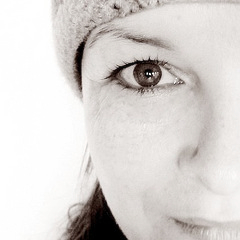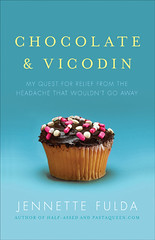Today, in this week’s installment of my series dedicated to sharing some things I’ve found that help me to feel a little more comfortable when I”m having a Terrible, Horrible, Very Bad, No Good Day, I am REALLY excited to be hosting Lisa Baldwin of Zen At Play.
She has written a delightful little e-book called “Take That Nap” which she describes as “a (short) guide to getting good stuff done (gently)”, and she has kindly agreed to visit us here today at Cranky Fibro Girl to tell us a little more about the book and what she does in her work. Welcome, Lisa!
1. First of all, I need to mention JUST HOW MUCH I have needed this e-book, and how it appeared at just the right time for me. And it has a very special place right next to my desk so I see it all the time and remember to use the tools it contains.So I was wondering, was the book something that developed over time, or did it just appear in a flash one day. For example, had you been using these tools with yourself and/or others for a while, and then you wrote “Take That Nap” as a way to collect them all in one place?
There’s a chapter about practicing self-kindness when things go very wrong, and that one was a surprise. I was in Burma by accident, completely unprepared, hovering on the brink of disaster with nothing but my lack of planning to blame. It was the perfect opportunity to beat myself up, yet I was delighted to notice that I wasn’t giving myself a hard time about it at all. Kindness had become my default response. Huge! So the chapter was right there in the moment – I wrote about it as I experienced it – and in that respect it arrived in a flash, but it also came from the years I’d spent being horribly unkind to myself.
So you could say that the book came in a flash, and was also a long time coming
2.I love that you close every chapter with a couple of “curly questions”. Could you tell us a little more about them? I especially love them because they are so much gentler than the kind of questions or exercises you find in “personal growth” or “self-help” books, that are always pushing you to “Take action now!”, and “Go! Do! Reach farther and harder! Push yourself out of your comfort zone!” Those just feel so violent to me, whereas curly questions feel gentle and soothing and supportive.
Take That Nap begins and ends with the idea that you are not your enemy, and you don’t need fixing. Sometimes we pretend we’re asking questions, but they’re really just “kick me” signs in disguise – variations of “why do I suck so much?” Instead, we have the option to get curious, practice listening and trust our own judgment. Helpful questions are the ones that spark curiosity and open up possibilities – if you feel attacked by your own line of questioning, it’s time to choose a new angle.
3. The theme of gentleness and kindness toward yourself runs throughout the book, and I was especially caught by how you applied it to the idea of having to choose where you are going to focus in any given moment, acknowledging that there are limitations that we must work within, and that we will feel sadness at times because there are some things we might just not get to in this lifetime. It was such a relief to read that, actually, after constantly being bombarded by books, magazines, info products and other things that constantly yell about how we can “Have it all!”, and “Have it all RIGHT NOW!”. And that if we don’t want it all, then there is something wrong with us. Could you talk a bit more about this idea of how this idea of limits and containers can actually be something that be helpful, and make us feel better, and help us get to the things we actually want to do?
Containment is a way to create a sense of safety within the impossible vastness of possibility. That sense of safety can invite innovation and imagination – this is how two sticks become fire or percussion.
When there are too many options, too much open-endedness, we end up feeling overwhelmed and scattered. We’re never doing enough, because there is always more that could be done. Right-sized containers give us something to work within, by choice or necessity, and that can lessen the pressure if we let it. If I can accept that I only have a certain amount of time and energy available, then I can lean in and work with it instead of struggling against it. That’s an act of self-care right there.
4. Could you give us an example or two of how you use some of your own tools? And, perhaps even more importantly, how you REMEMBER to use them? I tend to have a lot of “amnesia” when it comes to remembering how to take care of myself.
Do I always remember to do that stuff? Nope. I forget regularly. The practice is in remembering sooner than I did last time, and in being curious about the places where self-care gives way. Each time we remember again, we’re loosening our grip on our less helpful ways of doing. That’s progress, and that’s useful.
There are practical ways to remember – that’s what Post-It notes are for. At the same time, there is good juice in noticing where we create suffering for ourselves, and then adjusting accordingly, again and again. You are not failing at self-care if you forget sometimes. Notice, adjust, notice again. Gently does it
5. Thank you so much for visiting with me and Cranky Fibro Girl today. And finally, can I just say that I absolutely LOVE your bio: “Prolific ponderer. Kindness Enthusiast. Playful Budhhist with a passport and a pencil”. Can you give us a hint of what you might be “prolifically pondering”, and where your passport and your pencil might be taking you next?
As for me and my passport, well, we’re about to get busy. Take That Nap was launched from Burma, and it’s quite possible that I’ll be in India when I release my next collection of ponderings out into the world. That would be wonderful.

Lisa Baldwin. Prolific ponderer. Hopeful adventurer. Writer of short things. In love with kindness and the creative impulse. A playful Buddhist with a passport and a pencil. Kiwi, yet neither bird nor fruit. Hello!


 In addition to being one of our favorite people ever, Shannon is a life coach who uses NLP and hypnosis (plus her general, plentiful smartnesses) to help others find clarity and make positive changes. She is a lifelong entrepreneur who has been self-employed since 1996.
In addition to being one of our favorite people ever, Shannon is a life coach who uses NLP and hypnosis (plus her general, plentiful smartnesses) to help others find clarity and make positive changes. She is a lifelong entrepreneur who has been self-employed since 1996.